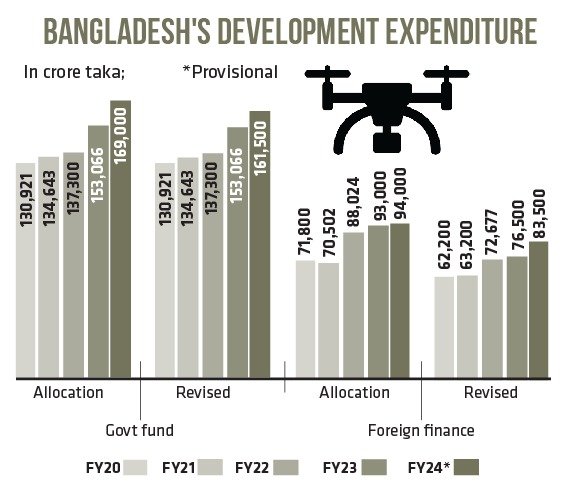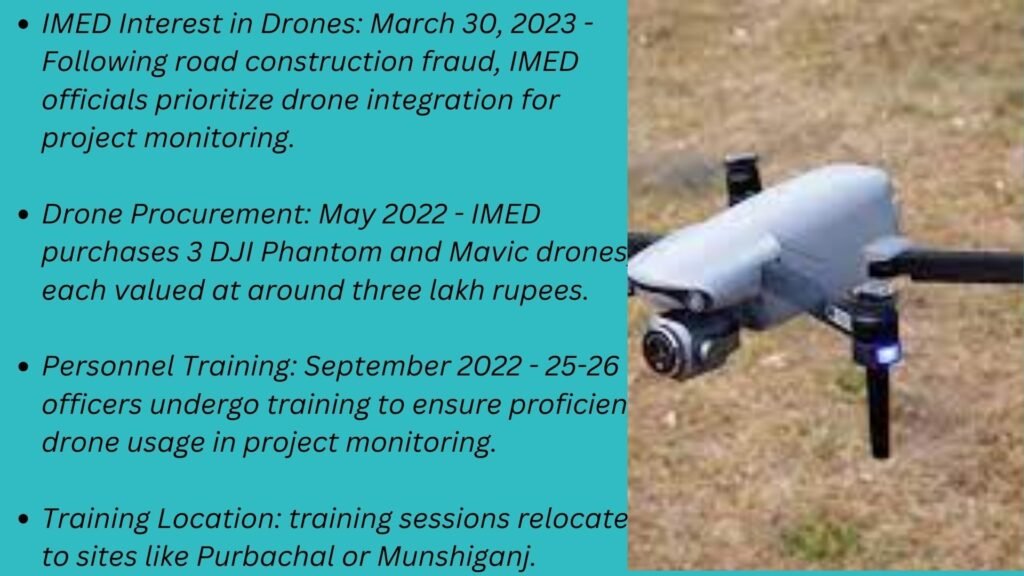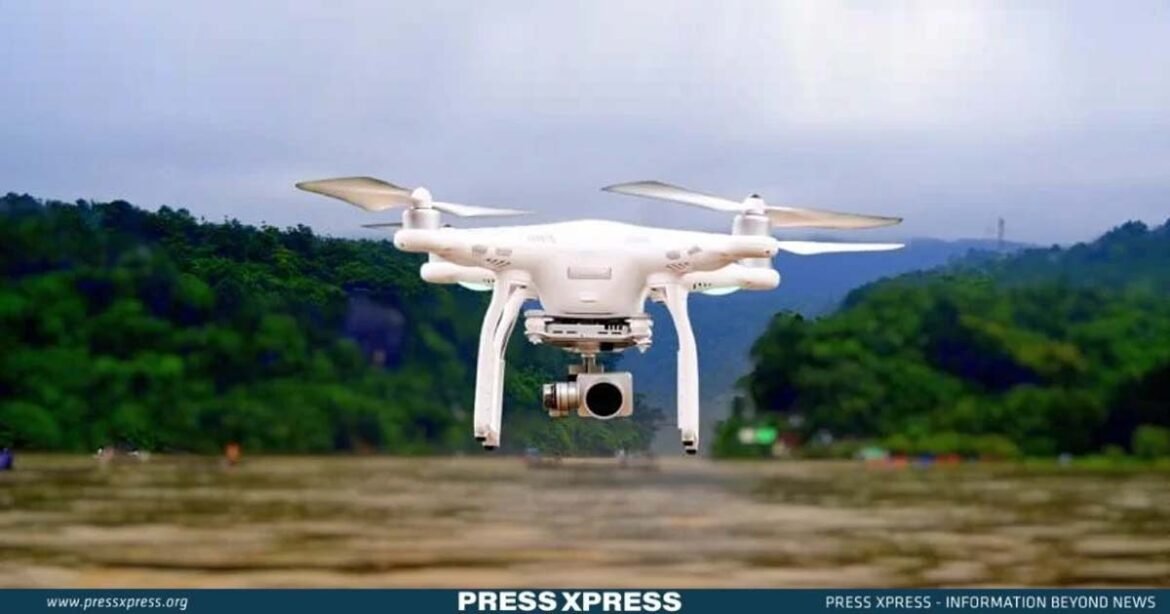As a part of good governance, in a strategic move to enhance oversight and quality assurance in public projects nationwide, the government of Bangladesh is planning to use drones extensively for inspection and surveillance purposes to enhance oversight and quality assurance in public projects nationwide. The Implementation Monitoring and Evaluation Division (IMED) of the planning ministry is spearheading this initiative to scrutinize project implementation while ensuring contractors adhere to standards. Hopefully, this policy will enhance further accountability of the project-related officials.
You can also read: World Defense Expo Bolsters Saudi Arabia’s Defense Arsenal
According to recent directives from the IMED, every official is tasked with inspecting at least one project using drones and submitting comprehensive reports within the current fiscal year.
However, IMED officials are mandated to ensure favorable environmental conditions, such as wind and cloud cover, especially in riverside areas, recognizing the technical complexities involved in drone operation. Challenges such as administrative hurdles and insufficient training have hindered the effective utilization of drones, as acknowledged by IMED authorities.

Progress and Challenges
To address these challenges, IMED has initiated comprehensive training programs for officials in drone operations. Initially conducted in the capital’s Agargaon, training activities were relocated to Munshiganj and Purbachal due to concerns over sensitive surroundings.
Despite initial setbacks, IMED has made notable strides in drone utilization. In the fiscal year 2021-22, the division acquired three drones, including the DJI Phantom 4 Pro and DJI Mavic 3. While drone deployment commenced on a limited scale in FY23, they are now operational in approximately 15 projects nationwide.
Secretary Mohiuddin emphasized the importance of drones in expediting project inspection and surveillance, noting ongoing efforts to train officials. However, challenges persist, including the need for official approval from the Civil Aviation Authority of Bangladesh (CAAB) for drones weighing over 5 kilograms.

Drones’ Success Hinges on Efficient Operation
According to Ministry of Planning sources, on March 30, 2023, IMED officials showed increased interest in integrating drones into routine project monitoring following the detection of instances of deceit and theft in road construction projects. Pursuing an experimental approach to project oversight, the department procured three DJI Phantom and Mavic drones in May 2022, each priced at approximately three lakh taka. Consequently, training sessions for relevant personnel commenced in September of the same year, with a total of 25-26 officers undergoing phased training.
However, Salim Raihan, Executive Director of the South Asian Network on Economic Modeling (SANEM), has expressed his support for the use of technology in project inspection.
Looking ahead, IMED aims to extend drone usage beyond the capital, focusing on areas that pose logistical challenges for physical access.
This strategic shift underscores the government’s commitment to leveraging technology for enhanced project monitoring and oversight.

An IMED official, speaking on condition of anonymity, highlighted the effectiveness of drones in detecting irregularities and emphasized their potential to mitigate such issues if deployed extensively.
Who Invented Drone?
Abraham E. Karem, born in 1937 in Baghdad, Iraq, is credited with inventing the drone and is known as the Father of UAV (Unmanned Aerial Vehicle) Technology. He built his first drone during the Yom Kippur War for the Israeli Air Force and later founded Leading Systems Inc. in the United States, where he developed the famous General Atomics MQ-1 Predator drone. Karem’s work has had a significant impact on the development of drone technology and influenced the design of military and civilian drones.
Drone Categories
According to the cabinet secretary, the use of drones has been divided into four categories in the draft policy.
- ‘Class A’ drones are for recreational use and must weigh below five kilograms.
- ‘Class B’ drones are for non-commercial use, such as surveying large areas for personal studies and research.
- ‘Class C’ drones are allowed for commercial use and may weigh above five kilograms.
- Drones used in state or military work are grouped as ‘Class D’ and require no permission.

Important Rules for Flying a Drone in Bangladesh
Based on the research and interpretation of the laws, here are the most important rules for flying a drone in Bangladesh:
- Drone pilots must be 18 years of age or older.
- Liability insurance covering risks of injury or damage to public and/or property is mandatory for all types of drone operations.
- Drone operations may only be conducted during daylight hours and in Visual Meteorological Conditions (VMC).
- The maximum height for drone operations is 200 feet above ground level (AGL).
- Special authorization is required from an Aerodrome Operator to fly a drone within ten nautical miles of an aerodrome.
- Drone pilots must obtain permission from the owner(s) of the property on which they intend to launch and land their drone(s).
- Anyone conducting drone operations should have a copy of the following documents with them while flying, and be prepared to present them to local authorities, police, or a CAAB inspector upon request:
- CAAB permission letter
- Proof of appropriate liability insurance coverage
- Name, address, and telephone number of the drone pilot
- A copy of the UAV operating limitations as published by the manufacturer.
- A site survey is required prior to conducting drone operations to assess the suitability of each location and confirm that safe operations can be conducted there.
In conclusion, the government’s initiative to utilize drones for project inspection and surveillance signifies a proactive approach towards enhancing transparency and accountability in public projects, paving the way for improved efficiency and quality assurance.


